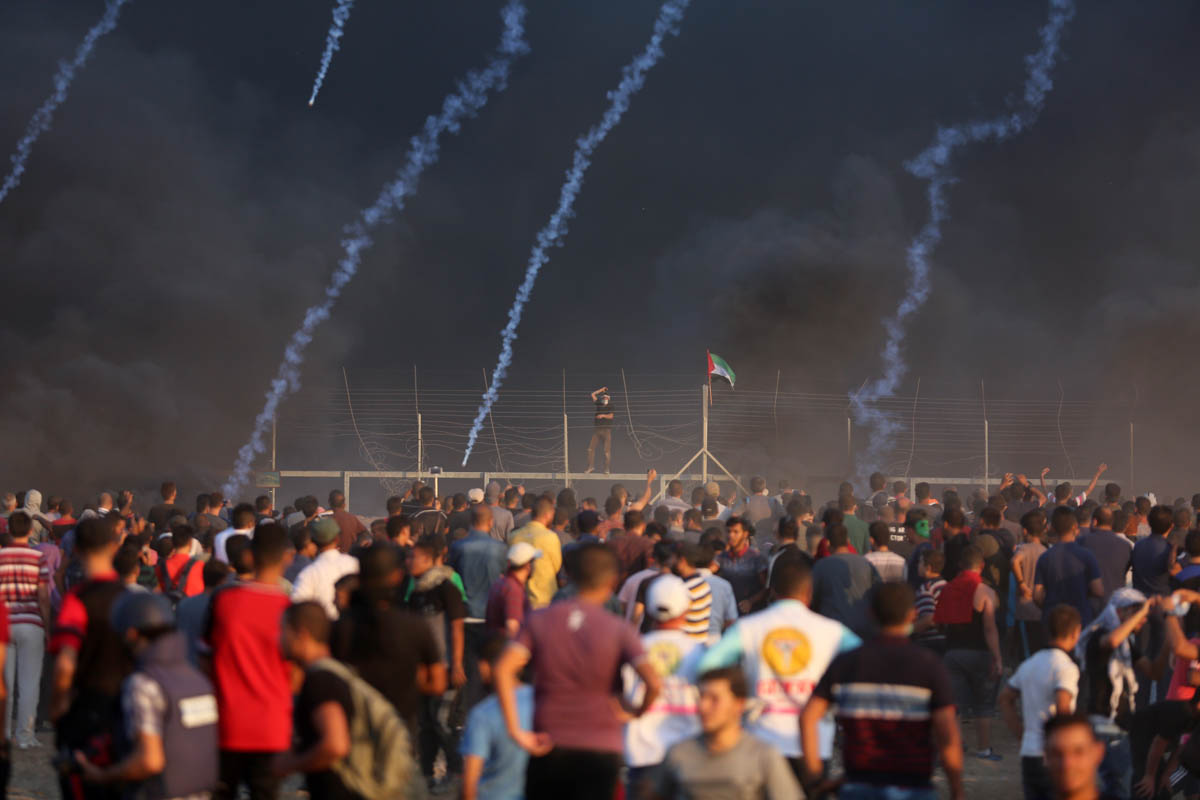They started on March 30, the commemoration of Land Day, which marks the events of March 30, 1976, when Israeli police shot and killed six Palestinian citizens of Israel as they protested against the Israeli government's expropriation of land.
The Great March of Return protests call for the right of return of Palestinian refugees, a right enshrined in international law, and the end of the siege imposed on the Gaza Strip by Israel and Egypt for over a decade, which has caused suffering to the Palestinians living there.
Around two-thirds of the Palestinians living in the Strip are refugees, more than 80 percent of the population relies on humanitarian aid.
According to the UN, the Gaza Strip will be unlivable by 2020.
According to Al Mezan Center for Human Rights, 194 Palestinians have been killed in the Gaza Strip since March 30.
Of them, 141 were killed during demonstrations, including 28 children, one woman, two journalists, three paramedics and three differently abled people.
Another 9,970 were injured, including 1,815 children, 419 women, 114 paramedics, and 105 journalists. Of those injured, 5,645 were hit by live fire, including 919 children and 113 women.
One Israeli soldier has died after being shot on July 20, 2018, during the protests.
Mohammed Zaanoun, a photographer and videographer, has been documenting the protests since the first day.
He was himself injured during a protest when shrapnel penetrated his hands.
His brother, who is a cameraman, was also injured by a live bullet while covering the protests.
But for him, the most difficult thing to witness is "when the sniper shoots at unarmed children for no reason, and then to see the mothers saying farewell to them".
Occupying forces also deliberately target journalists, Zaanoun says.
"There is always a danger, so every Friday I feel that I will not return home. I always think of going for a trip outside the country but this is difficult because of the siege and the closure of the crossings. I feel very sad and I go every day to the sea to lessen the frustration.
"With my photos, I hope that the world will see the truth about what is happening in Gaza."
The Great March of Return protests call for the right of return of Palestinian refugees, a right enshrined in international law, and the end of the siege imposed on the Gaza Strip by Israel and Egypt for over a decade, which has caused suffering to the Palestinians living there.
Around two-thirds of the Palestinians living in the Strip are refugees, more than 80 percent of the population relies on humanitarian aid.
According to the UN, the Gaza Strip will be unlivable by 2020.
According to Al Mezan Center for Human Rights, 194 Palestinians have been killed in the Gaza Strip since March 30.
Of them, 141 were killed during demonstrations, including 28 children, one woman, two journalists, three paramedics and three differently abled people.
Another 9,970 were injured, including 1,815 children, 419 women, 114 paramedics, and 105 journalists. Of those injured, 5,645 were hit by live fire, including 919 children and 113 women.
One Israeli soldier has died after being shot on July 20, 2018, during the protests.
Mohammed Zaanoun, a photographer and videographer, has been documenting the protests since the first day.
He was himself injured during a protest when shrapnel penetrated his hands.
His brother, who is a cameraman, was also injured by a live bullet while covering the protests.
But for him, the most difficult thing to witness is "when the sniper shoots at unarmed children for no reason, and then to see the mothers saying farewell to them".
Occupying forces also deliberately target journalists, Zaanoun says.
"There is always a danger, so every Friday I feel that I will not return home. I always think of going for a trip outside the country but this is difficult because of the siege and the closure of the crossings. I feel very sad and I go every day to the sea to lessen the frustration.
"With my photos, I hope that the world will see the truth about what is happening in Gaza."
 Great March of Return: Six months of protests in the Gaza Strip |
Great March of Return: Six months of protests in the Gaza Strip |
No comments:
Post a Comment